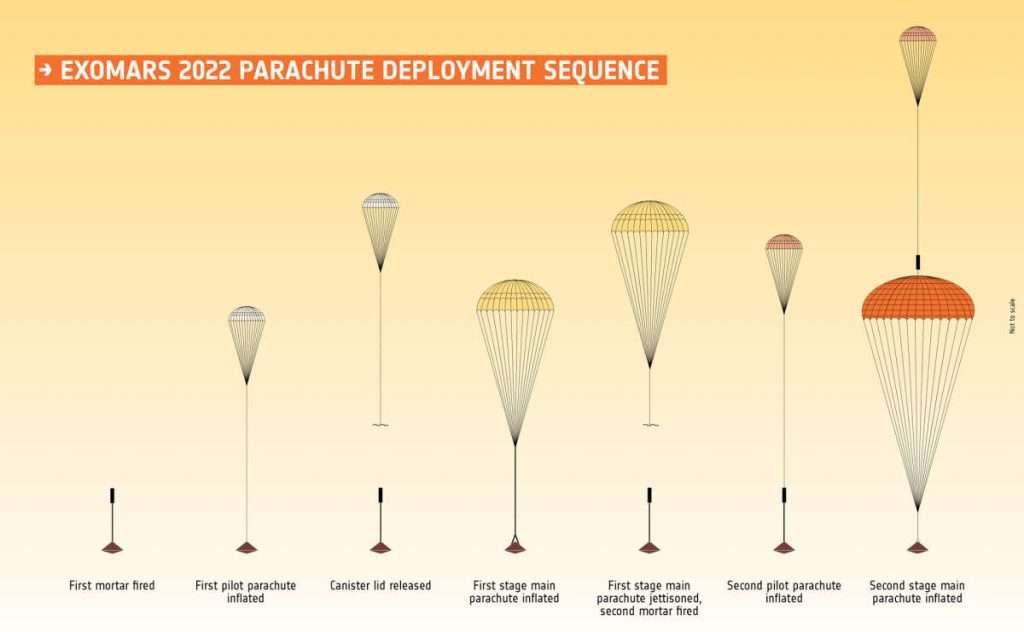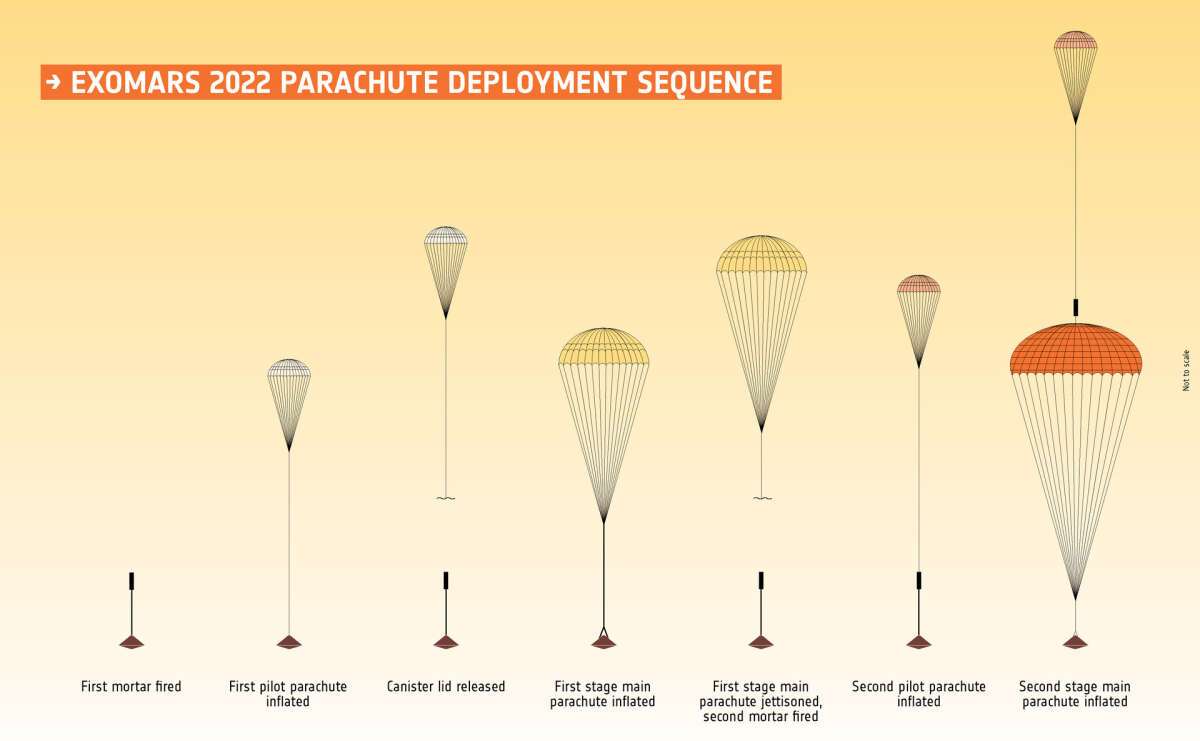
“Landing on Mars is extremely difficult, and there is no right to make a mistake,” says Francois Spoto, head of the ExoMars program team. “The last test was a good step forward, but this is not the ideal result that we strive for. Therefore, we will use the extensive test data obtained to improve our approach, plan further tests, and monitor the launch in September 2022. “
The Rosalind Franklin rover and the Kazachok ground platform are enclosed in a descent module that will be delivered to Mars using a carrier module. The descent module is equipped with two parachutes – each with its own parachute for removal – to slow it down before landing on Mars. As soon as the atmospheric resistance slows down the descent vehicle from 21,000 km/h to 1700 km/h, the first parachute will be deployed. After about 20 seconds, a second parachute will open at a speed of about 400 km/h. After parachutes are separated at an altitude of about 1 km above the ground, brake engines will turn on to safely deliver the landing platform ExoMars to the surface of Mars. The entire sequence of actions from entering the atmosphere to landing takes only six minutes.
The parachute system needs testing and testing on Earth, for which high-altitude drop tests play an important role in helping to represent low atmospheric pressure on Mars – a vital aspect when considering parachute inflation.
Testing conducted in Oregon, USA, was delayed from March 2020 due to COVID-19 restrictions, wildfires and adverse wind conditions. The redevelopment of logistics and suitable weather allowed the test to be held on November 9.
At the test installation, the load for the drop test rose to a height of 29 km on a stratospheric balloon.
The schedule of the last test, including extraction and deceleration, exactly matched the plan. However, after recovery, four breaks were found in the dome of the first main parachute and one break in the second main parachute. Damage occurred at the beginning of inflation, otherwise the decrease would not have gone evenly.
The ExoMars team is now analyzing test data to determine further improvements for the following tests. It is planned to conduct future tests in the first half of next year in order to “qualify” the full parachute system by the time of launch in September 2022.
Once safe in the Mars area of Oxia Planum in June 2023, the Rosalind Franklin rover will leave the platform and begin its scientific mission. The rover will look for geologically interesting areas for drilling to determine whether life ever existed on our neighboring planet.





